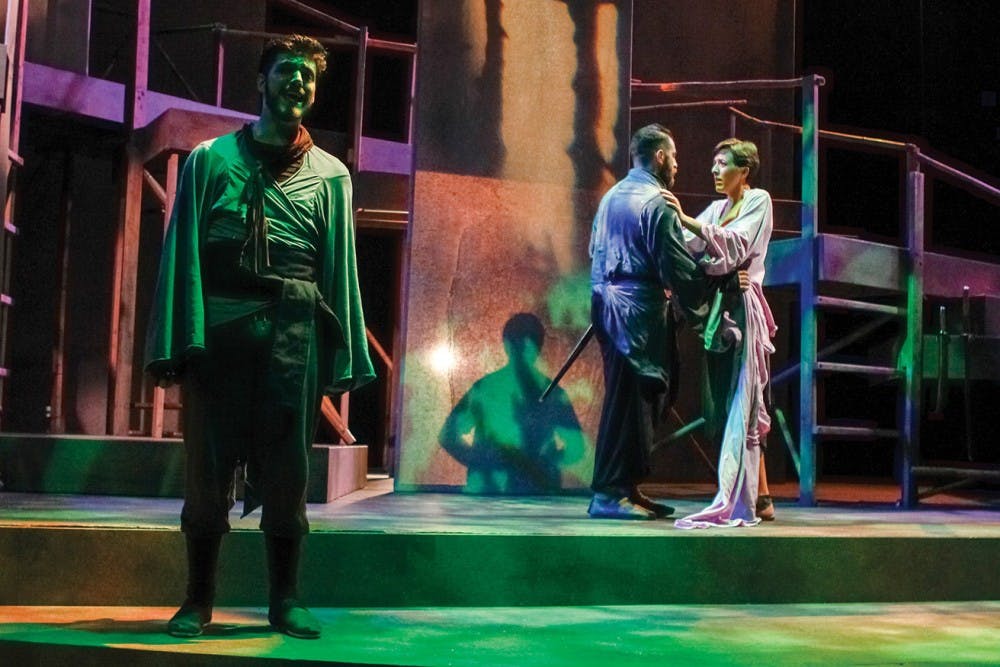OU students will relate to Rashomon, the Division of Theater’s second mainstage production, as it explores the issues of rape and truth
As rape and sexual assault on college campuses is a widespread issue across the nation, Ohio University’s Division of Theater is looking to start a conversation about the issue through the arts.
In Rashomon, the second mainstage production of the academic year, the story of a bandit raping a woman and the death of her samurai husband in the woods is told from three perspectives, each of which being very different from the others.
It’s what is called the Rashomon effect, which examines how people oftentimes have different and contradictory interpretations of the same event.
“Objective truth is not easy to come by,” said Brian Evans, associate professor of theater and director of the play. “The facts themselves may be subject to perspective … We take that for granted nowadays. We think we can just Google something and know the answer.”
Rashomon runs for two weeks, Wednesday through Saturday, in the Elizabeth Evans Baker Theater in Kantner Hall.
The play is set 1,000 years ago at the Rashomon gate near the ancient city of Kyoto, Japan making the idea of honor another important theme. Though it is about a specific time period and culture, Evans said it’s a universal story.
“It’s very real right now, especially with everything that has happened (on our campus,)” said Emilio Tirri, a third-year graduate actor who plays Tajomaru, the bandit. “Hopefully, (the play) can start a conversation … It needs to be talked about.”
Kat Bramley, a third-year graduate actor, plays Masago, the central woman of the story. She said approaching these topics through an artistic medium might be able to add more to the ongoing conversation.
“The circumstances she finds herself in are the same as so many women on this campus,” Bramley said. “There are panels to listen and talk about these issues, but there’s something really unique in watching a story unfold before you … You sit in the audience at a safe distance … It’s a way to hold a mirror up to this culture, but in a way that isn’t threatening.”
In the play, the rape and deaths are abstracted rather than blatantly shown on stage. Projections and silhouettes are used to simulate them. Bramley said they were very conscious of trying to not create any triggers for anyone in the audience who might have had first-hand experience with the issues of the play.
The projections are also used to connect Rashomon directly to Athens. For instance, the first image shown is of the OU Alumni Class Gateway and then the action at the Rashomon gate begins.
At the heart of Rashomon and the Rashomon effect, the issue of truth supersedes all. The play does not give a conclusive stance on which perspective is “right.”
“I’ll be interested to see what people think after. Which point of view is right?” Tirri said. “What’s the truth?”
@buzzlightmeryl
mg986611@ohio.edu






